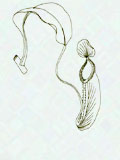

 |
 |
Hong Kong Macaques
by Wong Che-lok
This colourful booklet is a welcome addition to the Hong Kong natural history library, and an affordable one at HK$38. It is amply illustrated with high-quality and varied photographs and figures, and contains an impressive amount of detail on the macaques of Kowloon Hills, with 64 pages including English and Chinese. Never has it been easier for the public to appreciate our fellow Hong Kong primates.
The 11 chapters include those on the history, species composition, distribution, social organization, range and foraging, life cycle and ecological importance of macaques. Each combines the author’s observations, those of the Hong Kong monkey feeders, and the findings of other studies. One consequence is that the source of generalizations is not always clear, and some are surprising – that male dominance depends on size and strength (most studies find tenure more important), and that most macaques sleep on the ground (most took to the trees in my own observations), among other examples. A more clear-cut error is the photograph of "aggressive behaviour" (p. 50, top left), actually depicting a teeth-baring appeasement gesture akin to the human grin.
The social dynamics are brought to life with accounts and pictures of the alpha males of the different groups in the early to mid-1990s (apparently more recent developments have not been studied). Clearly, feeders’ tales have had a strong influence, most explicitly in the "love story" explaining one dominant male’s emigration, which might displease some anthropologists. But it’s pitched more at arousing the empathy of the general reader, and since we tell stories about fellow humans, why not about monkeys too?
The booklet concludes with guidelines on how to safely behave around monkeys – happily this, like much else, makes good use of the WWF Hong Kong study in the early 1990s (though there is no sign of a panda logo in acknowledgement). There are also supplements, such as more specific encouragement of observations on natural behaviour. Overall the author is to be congratulated on a creative blend of colour and information. It is unfortunate though that the English has not been edited – one might expect a better support mechanism from a Government Department.
P.24
|
Porcupine! |
 Copyright © 2000 |